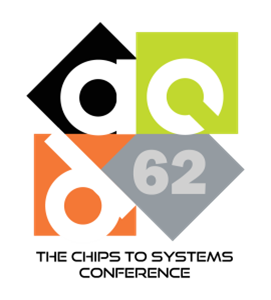
I’m attending DAC — short for Design Automation Conference — for the first time. It’s a conference for creators and users of EDA, or electronic design automation, and they claim to have been holding it for 62 consecutive years, except for a few years off during the COVID-19 pandemic.
I’m here because of a long-standing need for coverage of EDA. After covering design software for over 30 years, I must admit that my focus has been on the mechanical side, rather than the electrical side. DAC is my attempt to catch up.
From reading the program and session descriptions, I realize I might be in over my head. Not only is it all about semiconductors (as expected), but it also has a decidedly academic tone. At CAD conferences, they talk about software. At DAC, they present peer-reviewed papers and cutting-edge research. The presenters hold PhDs, and they delve into the subject matter.
This year’s keynote, delivered by Dr. William Chappell of Microsoft, focused on utilizing AI to expedite vaccine development for monkeypox (MPOX).
“We have not cured MPOX,” he says. “But we have increased the speed with which we can create vaccine candidates.”
Apparently, Microsoft is investing in AI for medicine, perhaps hoping for a major win after its multi-billion-dollar investment in ChatGPT.
Without a medical background, I can only draw parallels between “discovery in medicine” and “discovery in engineering.” Dr. Chappell didn’t imply or infer any negative impact of AI on human medical researchers. He didn’t need to. It was in the thought bubble of the audience. They weren’t medical researchers, but they drew their own parallels. The jolt was real: “Is AI going to take my job, too?”
AI has already displaced developers, writers, animators… and now, for the DAC audience, a more unsettling thought: AI excels at chip design. It can rapidly run “what-if” scenarios to optimize the grouping of transistors in semiconductors. Will these attendees be back for DAC 2026 (to be held in Long Beach, California)?
Has the industry already shed some developers? The crowd seems thin. The poster boards display only a few papers. We’ve heard of a record number of submissions — over 500 — mostly on AI, all touting the benefits of AI.
For now, AI’s advantages are still warmly received. Dr. Chappell commanded reverent attention and applause. However, AI presentations may be reaching a shrinking audience. Those in attendance may still believe they are among the chosen — that their jobs require genuine intelligence, not artificial intelligence. They get good reviews, and their managers approve their trip to San Francisco for DAC. They have every reason to feel secure — except one: AI is a threat to anyone whose work depends on their mind. If you are paid for your thinking, AI may still be behind you, but it’s gaining fast.
I think about all the press releases I receive. How many could already be written by AI? Would I even know? Press releases follow a familiar format; their creation could easily be automated. When I dimensioned my last drawing, I was promised AI had already learned that task, freeing me to be more creative.
Now, I wonder: how long will I be allowed to be creative? Already, CAD and EDA companies are promoting “design exploration” powered by AI.
Design exploration may be a precursor to true creativity that produces brilliant ideas and breakthrough solutions.
Thomas Edison — perhaps the greatest inventor ever — once said:
“Genius is one percent inspiration and ninety-nine percent perspiration.”
Let’s face it: engineers are the perspiration. Except for the 1% who invent and hold patents, the rest of us execute others’ plans.
In my first job as an engineer, I supervised the production of electronic jamming devices for the military — inventions from decades prior. There was nothing creative about attending production meetings or reviewing ECRs (engineering change requests).
